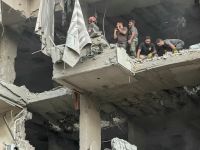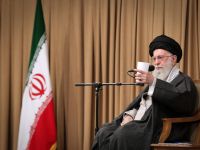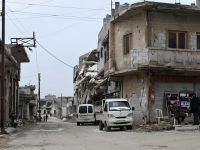Iraq has rebuilt and even improved its air defenses since American and British planes attacked radar stations and command centers in February, US Secretary of Defense Donald H. Rumsfeld said Friday.
"It does appear that Iraq has been successful in quantitatively and qualitatively improving their air defense," Rumsfeld said, cited by the New York Times newspaper during a news conference.
US administration officials say Iraq has become more aggressive and effective in targeting American and British planes over the "no-fly" zones in northern and southern Iraq, and has even fired at American planes in the airspace of neighboring countries.
Rumsfeld refused to be drawn into a discussion of specific plans to strike again at Iraqi targets, but he did say, "One tends to want to do things that will have somewhat more lasting effects."
President Bush's senior national security team convened on Thursday to discuss policy toward Iraq, Rumsfeld said.
Administration and Pentagon officials said Friday, meanwhile, that the policy review had not been completed, and that no decision had been made about mounting a major strike.
In recent days, the Pentagon cataloged Iraqi military actions against American and British aircraft; these "provocations" were defined as firing antiaircraft artillery and surface-to-air missiles, as well as locking onto planes with the radar that controlled those weapons.
US air forces struck Iraqi early warning radar and command posts around Baghdad on February 16 to knock out a fibre-optic network that was enabling Iraqi air defenses to target US and British aircraft with increasing accuracy.
The Iraqis have since re-laid the fibre-optic cable, Rumsfeld said.
The United States charged that Chinese experts laid the network struck in February, but when asked whether China was involved this time, Rumsfeld would not say.
The cables can carry large volumes of imagery, voice and data at high speeds and are difficult to target and bomb when buried underground.
Iraqi attacks on US and British aircraft patrolling the no-fly zones have intensified sharply since the start of the year, in a determined effort to bring down a coalition aircraft, Pentagon officials say.
In recent days, crew members of US military aircraft have reported surface-to-air missile launchings into Kuwait and Saudi airspace, and a near-miss attempt to bring down a high-flying U-2 spy plane.
But Iraq denied it tried to shoot down the spy plane, saying the target was an F-15 fighter bomber.
Moreover, Rumsfeld said the US interest in conducting the flights over northern and southern Iraq was "understanding what goes on in that country."
"If in the last analysis that you're reasonably comfortable that you have a reasonable understanding of what's taking place on the ground which gives you a reasonable warning time, that's what your goal was," he said.
One option proposed by military commanders is to send fighter aircraft on fewer patrols over Iraq and to rely more on reconnaissance aircraft and other intelligence assets to keep watch over the country.
He said on-scene commanders "have done what is possible to do" in response to the attacks by Iraqi air defenses.
"To the extent that you can do something about it that's immediate, prompt and effective you do it," he said.
But, he added, "The longer it goes on, obviously, the better they (the Iraqis) get at it."
The "no-fly" zones are not approved by the UN, and previous US-UK justifications for their existence had focused on defending Kurdish and Turkish minorities in Iraq.
However, even as US warplanes have flown out of Turkish airbases to patrol the zones, Turkish forces have been launching large-scale attacks on resistance groups of their own Kurdish minority – Albawaba.com
© 2001 Al Bawaba (www.albawaba.com)







